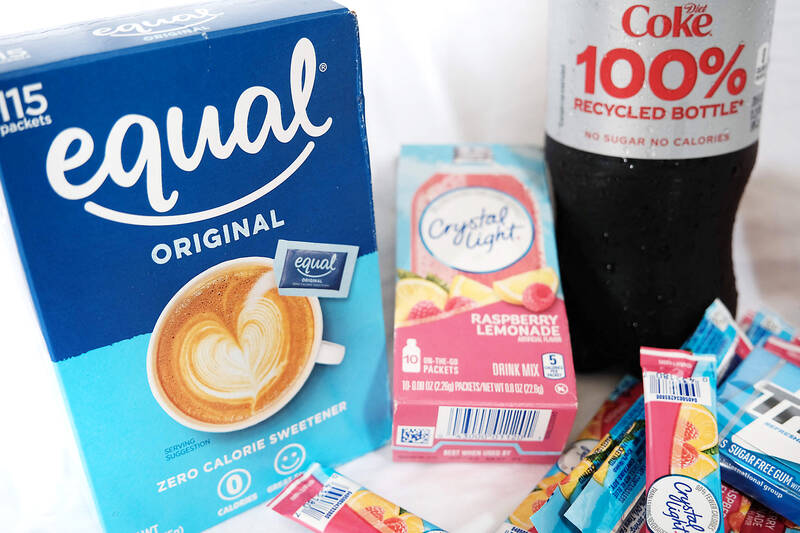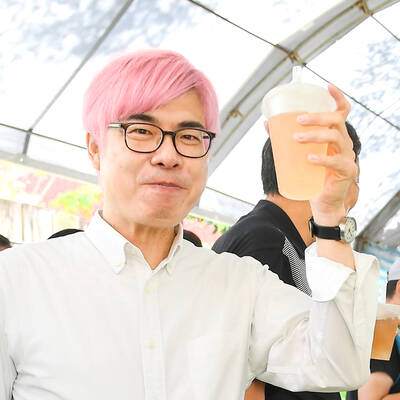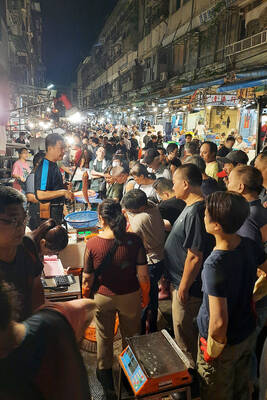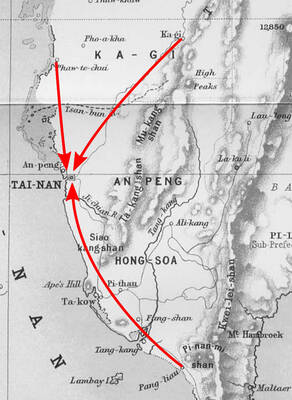“You sound like you’re talking about quitting a class A drug,” my friend said, incredulously. I’d been telling her about what happened when I tried to give up my Diet Coke habit — about the sweats and shakes that followed, along with a thirst that no amount of water could quench.
“I had a week-long migraine that made me see black spots every time they opened,” I continued. “I’m telling you, it was really tough.”
I’d be lying if I said I ever managed to quit Diet Coke completely, but it’s no longer a necessary fixture of my day. Ten years ago it was a different story. Back then I was living in Strasbourg, on the French-German border, directly opposite an innocuous little corner shop. I worked long days from home, teaching English — and one particularly hot and busy summer, with no time between tutoring sessions to venture further, my corner shop visits ramped up.

Photo: AFP
The tiny store didn’t have much in the way of cold drinks — just water, regular Coke and Diet Coke. Water I could get at home, I reasoned, and regular Coke was far too sweet, so I went for Diet.
My “little treat.”
Pretty soon, though, I was treating myself three times a day — on a good day. It became the first thing I drank in the morning and the last thing before bed, often replacing water entirely. I loved the sound of the ring-pull piercing through the lid; the cool, fizzy liquid; the buzz that would follow as it awakened my senses.
“It’s not as bad as normal Coke,” I told myself, remembering the shocking information I’d seen illustrating how much sugar goes into a single can of the hard stuff.
Still, it was becoming abundantly clear that it wasn’t good for me. The sweetener used in Diet Coke, aspartame, was being increasingly linked to cancer, though experts now say it’s safe in the doses commonly consumed. It has also been linked to an increased risk of stroke.
This, plus my own fixation on the drink, terrified me. I found myself thinking about it constantly — when I could have one, how that first sip tasted. I wasn’t sleeping well and felt more irritable. I got a headache if I didn’t have it before 9am. I had rules: no bottles, no variations (the caffeine-free and lime versions are an abomination), definitely no Pepsi. It had to be ice-cold Diet Coke, from a can, ideally served in a glass with ice. That cracking sound the ring-pull made as it was lifted had me salivating like Pavlov’s dog. I was hooked.
Initially, I tried lowering my intake, popping out to grab one once a headache started to take hold. But I often felt sluggish in the afternoons, especially as I didn’t like other caffeinated drinks.
Pretty soon I started breaking my own rule and upping my daily quota to two. That meant 14 cans a week, or 4,620 milliliters. I was still thinking about it constantly.
I decided that going cold turkey was the only way to stop me obsessing. The headaches, tiredness, irritability and sweats I experienced in the week that followed were a drag to pull myself through, but I did it. I also forced myself to start drinking tea in the mornings, which helped ease my headaches.
Now I rarely drink Diet Coke at all, but I still experience a yearning for it whenever I see someone else enjoying a can. Very occasionally, on holiday or at special events, I’ll indulge, but I have to quickly have a word with myself otherwise it’ll snowball into becoming an everyday fixture again.
The realization that Diet Coke had such a hold on me, coupled with my withdrawal symptoms, was (and remains) enough to scare me off; my body as well as my bank balance have thanked me for quitting. Yet, as bad as it got, I don’t think I’ll ever feel indifferent about the beverage. I can’t imagine a time when, on seeing it, I don’t fantasize about the hiss of the ring-pull, the sight of the beads of condensation running down the can — or the thrill of that first, beautiful sip.

The Taipei Times last week reported that the rising share of seniors in the population is reshaping the nation’s housing markets. According to data from the Ministry of the Interior, about 850,000 residences were occupied by elderly people in the first quarter, including 655,000 that housed only one resident. H&B Realty chief researcher Jessica Hsu (徐佳馨), quoted in the article, said that there is rising demand for elderly-friendly housing, including units with elevators, barrier-free layouts and proximity to healthcare services. Hsu and others cited in the article highlighted the changing family residential dynamics, as children no longer live with parents,

It is jarring how differently Taiwan’s politics is portrayed in the international press compared to the local Chinese-language press. Viewed from abroad, Taiwan is seen as a geopolitical hotspot, or “The Most Dangerous Place on Earth,” as the Economist once blazoned across their cover. Meanwhile, tasked with facing down those existential threats, Taiwan’s leaders are dying their hair pink. These include former president Tsai Ing-wen (蔡英文), Vice President Hsiao Bi-khim (蕭美琴) and Kaohsiung Mayor Chen Chi-mai (陳其邁), among others. They are demonstrating what big fans they are of South Korean K-pop sensations Blackpink ahead of their concerts this weekend in Kaohsiung.

Taiwan is one of the world’s greatest per-capita consumers of seafood. Whereas the average human is thought to eat around 20kg of seafood per year, each Taiwanese gets through 27kg to 35kg of ocean delicacies annually, depending on which source you find most credible. Given the ubiquity of dishes like oyster omelet (蚵仔煎) and milkfish soup (虱目魚湯), the higher estimate may well be correct. By global standards, let alone local consumption patterns, I’m not much of a seafood fan. It’s not just a matter of taste, although that’s part of it. What I’ve read about the environmental impact of the

Oct 20 to Oct 26 After a day of fighting, the Japanese Army’s Second Division was resting when a curious delegation of two Scotsmen and 19 Taiwanese approached their camp. It was Oct. 20, 1895, and the troops had reached Taiye Village (太爺庄) in today’s Hunei District (湖內), Kaohsiung, just 10km away from their final target of Tainan. Led by Presbyterian missionaries Thomas Barclay and Duncan Ferguson, the group informed the Japanese that resistance leader Liu Yung-fu (劉永福) had fled to China the previous night, leaving his Black Flag Army fighters behind and the city in chaos. On behalf of the